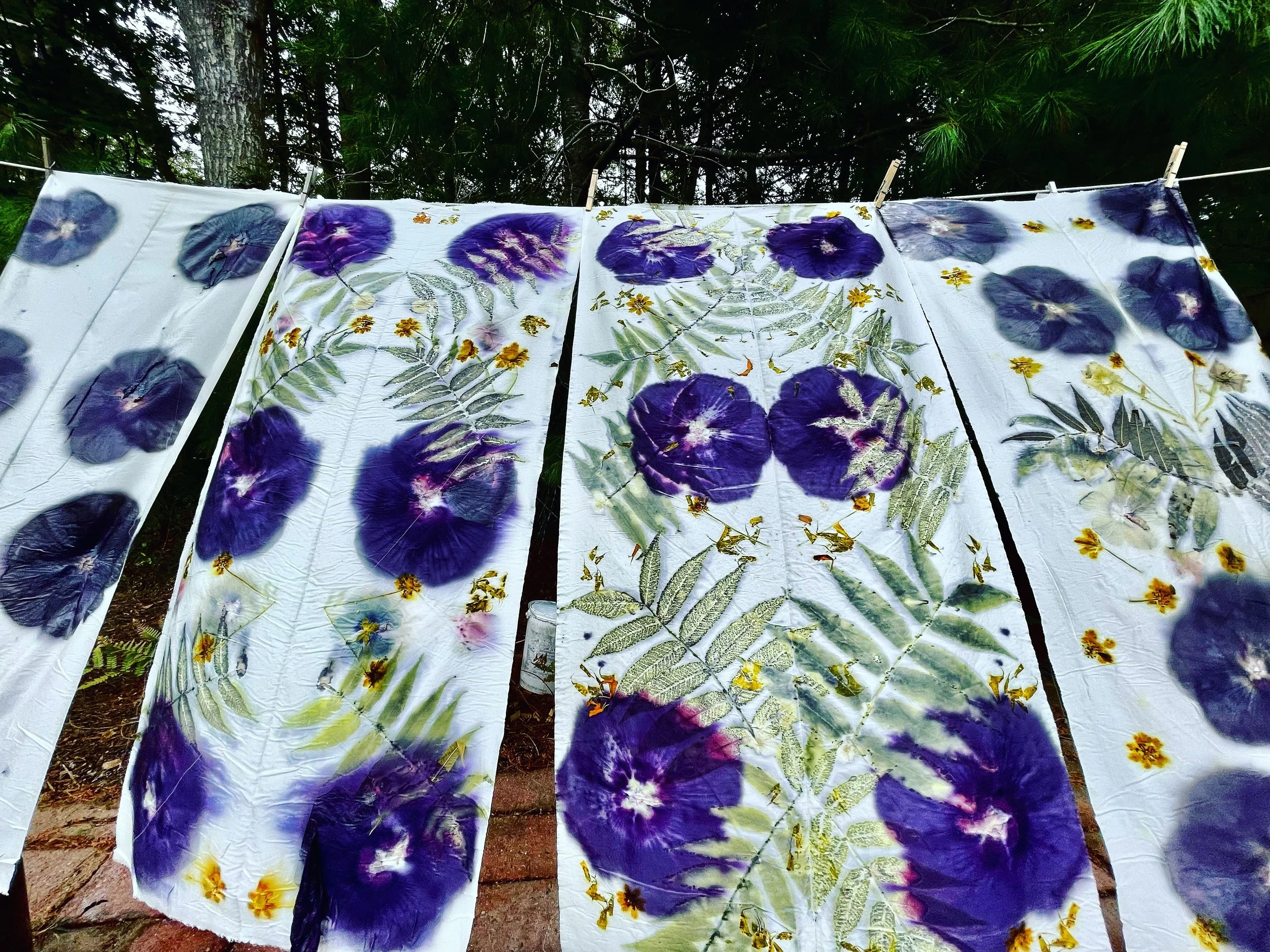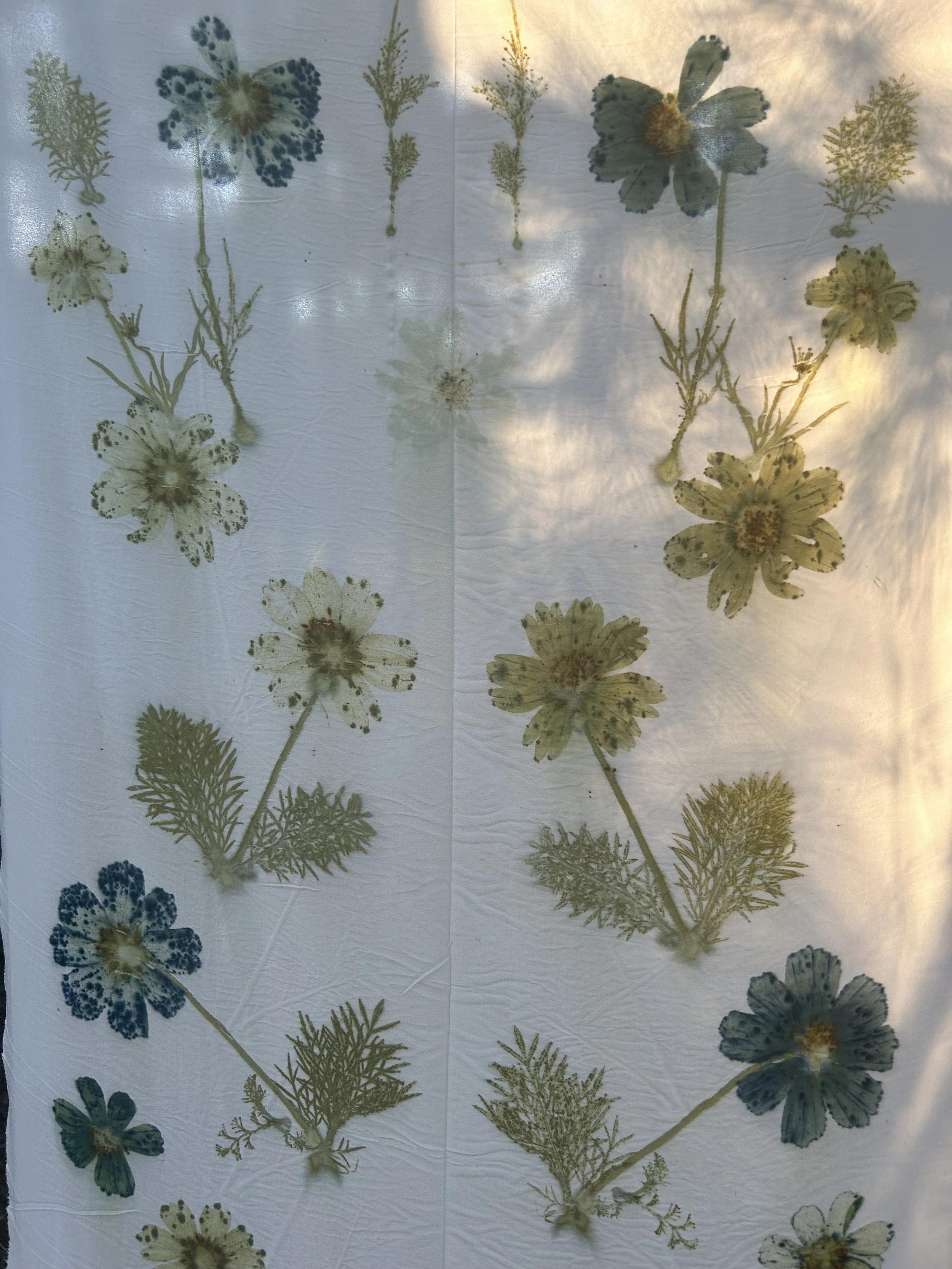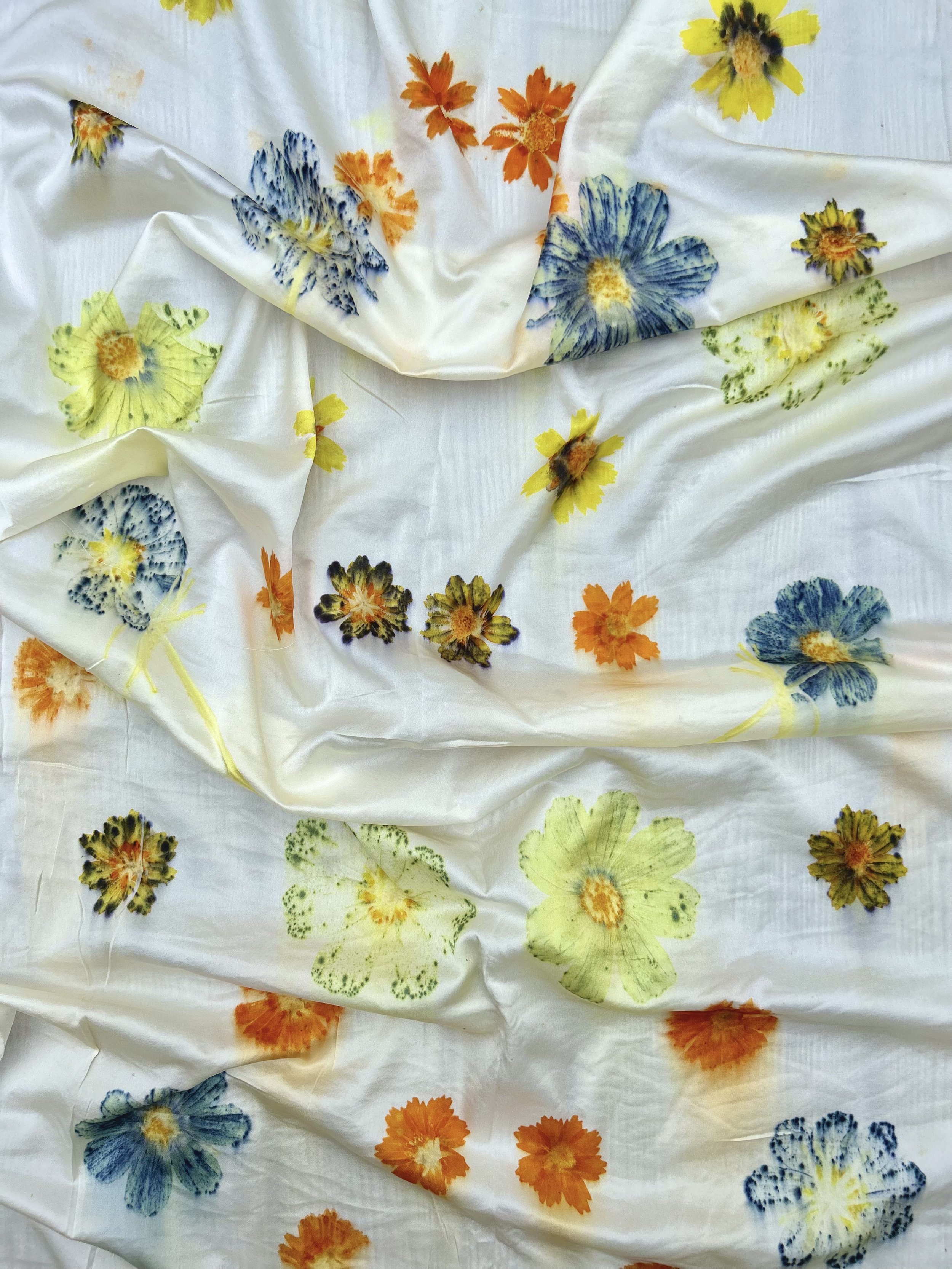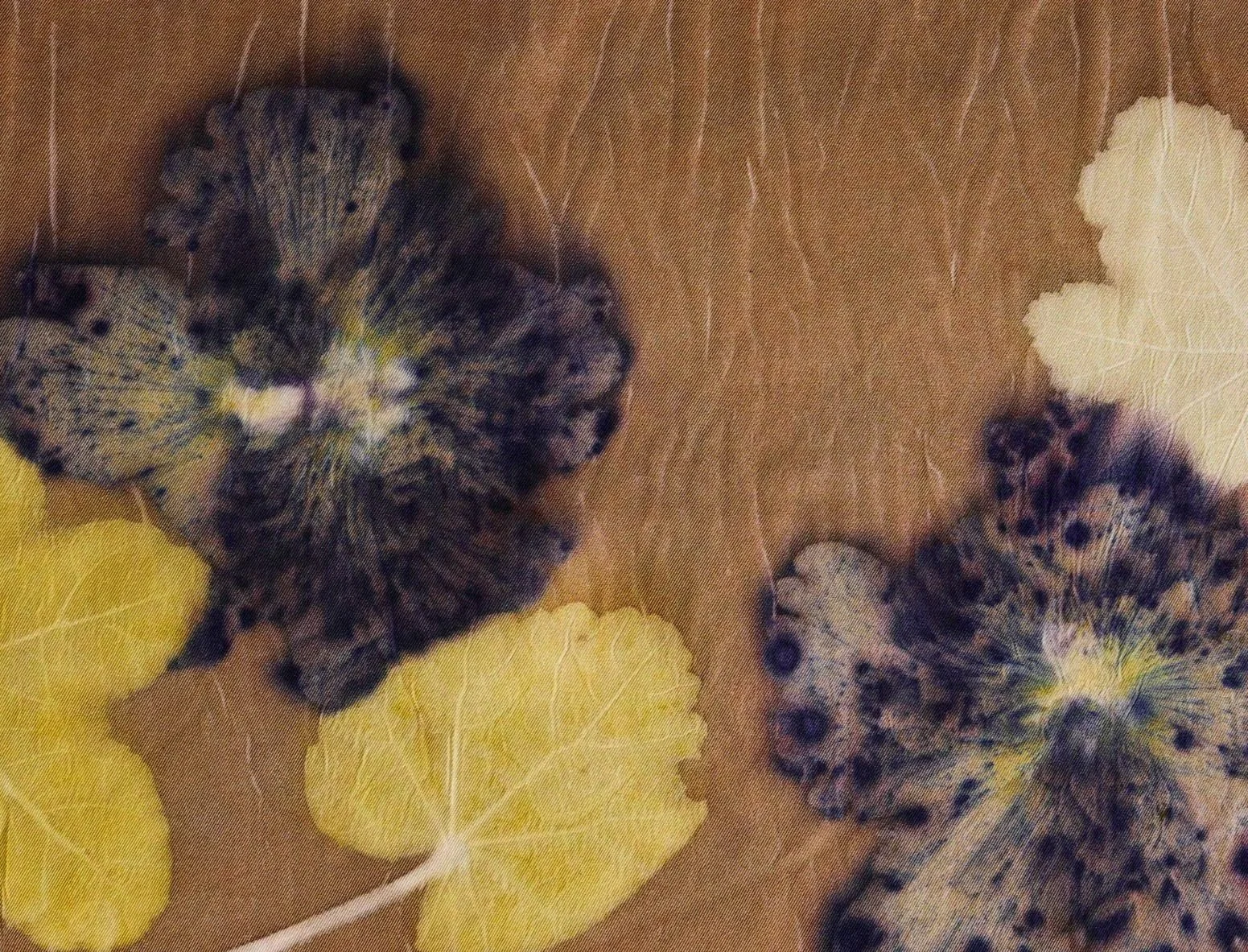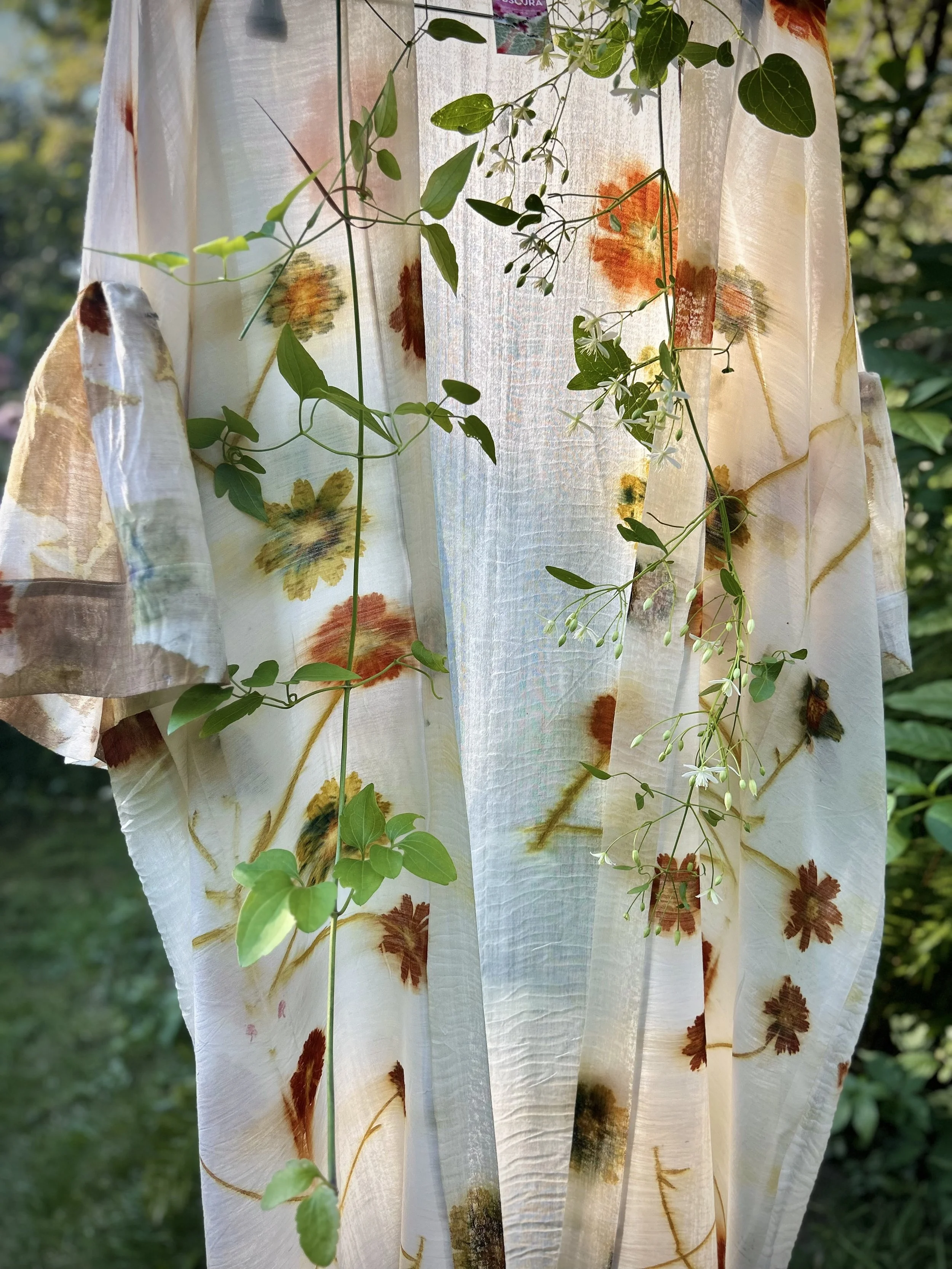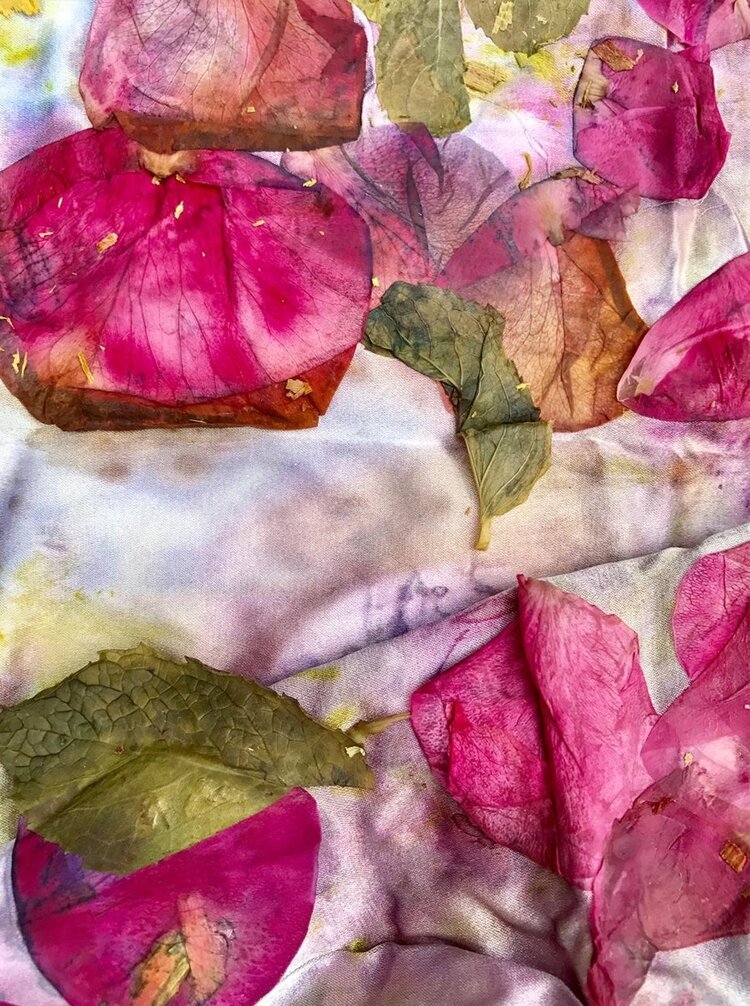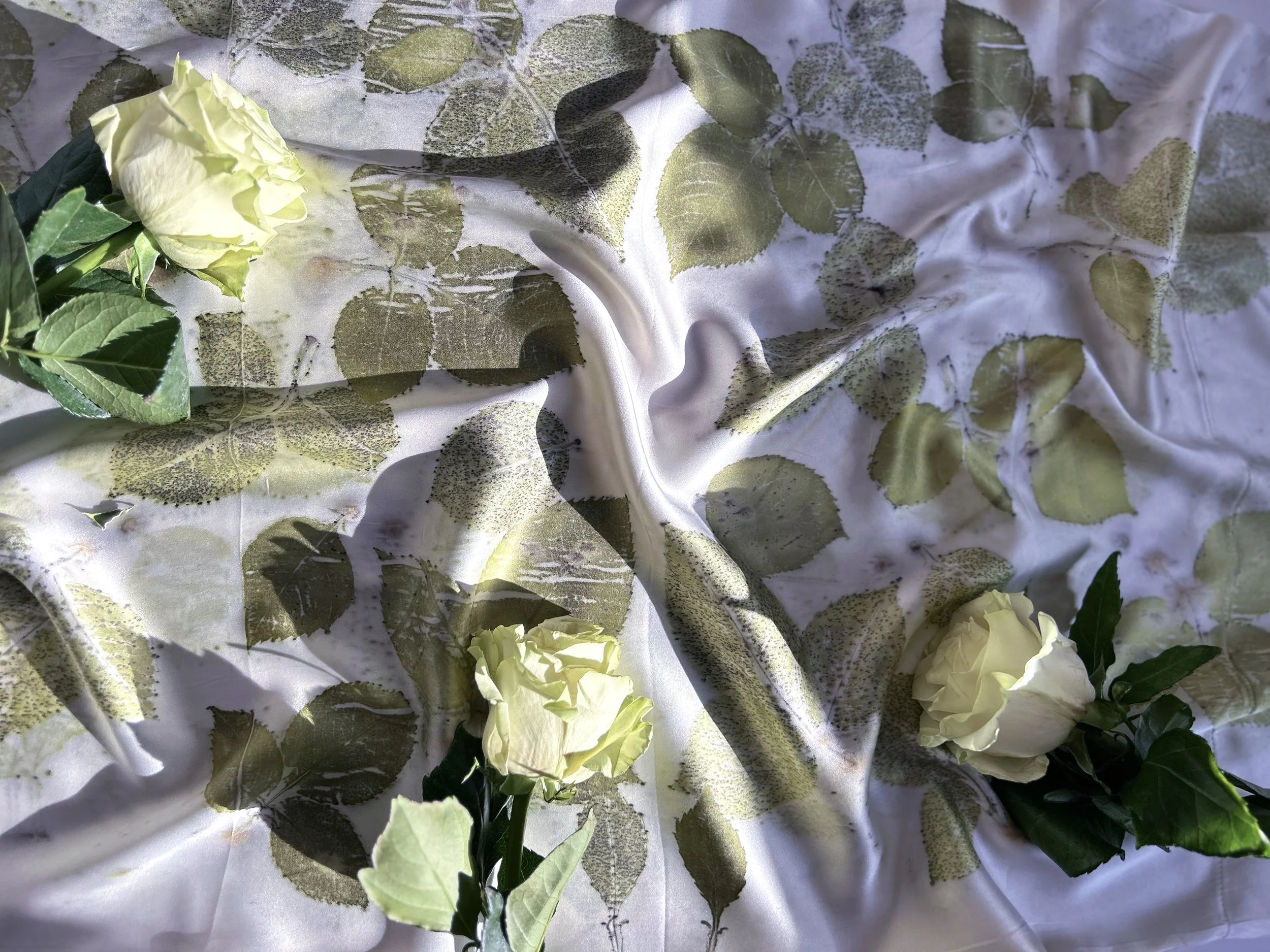Seven Unexpected Flowers That Print Like a Dream
There’s a quiet alchemy that happens when plants meet silk. Some petals leave only whispers; others bloom again in pigment form — imprinting their memory into the cloth. These six unexpected botanicals never fail to surprise me with their vivid, soulful colors.
Hibiscus blooms on silk charmeuse made into a Flora Obscura robe…
Hibiscus & The Amazing Blue Prints
When a crimson bloom reveals its hidden cool tones… At first glance, the hibiscus seems predictable — crimson, lush, and loud. But in the still heat of a dye pot or a tightly wrapped silk bundle, something unexpected happens. Its ruby pigment slips into another realm, revealing deep indigo, periwinkle, and sapphire hues that feel like moonlight caught in fabric.
The hibiscus reminds us that color is alive — mercurial, emotional, responsive. Its transformation from scarlet to blue is a quiet act of rebellion, a reminder that even the most passionate bloom can dream in cool tones.
Rosa Sinensis on silk charmeuse with staghorn sumac, marigold and impatiens…
Cosmos on silk crepe with alum and iron mordant…
Cosmos — The Painter’s Flower
Delicate to the touch but bold in pigment, cosmos petals create luminous magenta and fuchsia tones and even aqua and blue, that seem to float above the silk.
Secret: Lay the petals face-down and gently press them into damp fabric before bundling. Steam gently — cosmos are sensitive to heat, no need to exceed 25 minutes of steam time. Their prints resemble watercolor blooms, soft yet radiant.
Cosmos on silk charmeuse…
Dark purple hollyhock on watercolor paper…
Hollyhock — The Shadow Maker
Hollyhocks surprise with dusky violets, indigos, and teal undertones.
Secret: Press petals between paper for a few hours before printing. The slight wilting deepens the pigment and leaves dreamlike halos — perfect for ethereal designs.
Hollyhocks on silk crepe
Coreopsis blooms on silk/wool voile made into a Flora Obscura robe…
Coreopsis — Liquid Gold
A humble wildflower that gives off pure sunlight. Coreopsis prints range from bright yellow, to gold, to amber to saffron, leaving golden bursts wherever they touch.
Secret: Add a touch of iron to your mordant or pair with eucalyptus leaves to create natural shadow and depth. The contrast brings the gold to life.
Coreopsis flowers on silk crepe…
Rose of Sharon blooms on silk charmeuse with a tannin blanket…
Rose of Sharon— The Bloom That Defies Expectation
Most hibiscus species print in dark blue or rusty mauves. But Rose of Sharon behaves differently: its petals contain anthocyanins that react to pH and metal salts, shifting from aqua to cool turquoise.
Secret: The aqua hue appears only when the silk has been pre-mordanted in alum and can vary in hue by working with or without iron.
Rose of Sharon pigment is fragile — too much moisture, and it will blur; too much heat, and it vanishes. Gentle, even steaming for about 20-30 minutes brings out the clearest color.
Fresh pink roses and leaves on silk charmeuse…
Rose — The Alchemist
Roses never do what you expect. Depending on the variety and pH, they can shift from blush pink to mauve, slate grey, or smoky lavender.
Secret: Dried roses will print more colorfully than fresh petals. The acidic nature or fresh roses tends to take away more color than it imparts. The leaves however will give generous imprints of verdant green when used in tandem with an alum and iron mordant.
Join my next natural dyeing workshop and learn the secret alchemy of flower pigments firsthand.


